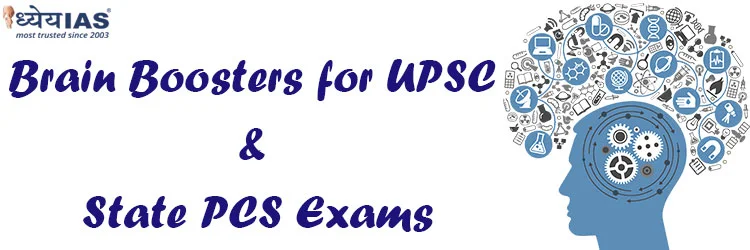Current Affairs Brain Booster for UPSC & State PCS Examination
Topic: Digital Quality of Life Index 2020

Why in News?
- Recently, the Digital Quality of Life (DQL) Index 2020 has been released by SurfShark.
Digital Quality of Life Index 2020
- The index, prepared by Surfshark, a virtual private network (VPN) provider based in the British Virgin Islands, sought to rank countries that define the digital quality of life by looking at five fundamental pillars. All parameters have equal weightage.
- It is a global research on the quality of a digital wellbeing in 85 countries (81% of the global population).
- The DQL Index has revealed insights on what tangible factors have the greatest impact on the country’s digital wellbeing, and which areas should be prioritized in improving its potential.
Five Pillars of Digital Quality of Life
- Internet affordability: How much time people have to work to afford the internet connection?
- Internet quality: How fast and stable is the internet connectivity in a country?
- Electronic infrastructure: How developed and inclusive is the existing electronic infrastructure?
- Electronic government: How advanced and digitized are country’s governmental services?
- Electronic security: How safe and protected can people feel in a country?
Key Takeaways from the Index
- Top countries with the highest DQL: Scandinavian countries, Denmark and Sweden topped the index, with Canada rounding up the top three, excel in offering high quality digital wellbeing to their citizens.
- 7 out of 10 countries with the highest DQL are in Europe, reflecting strong development across the majority of aspects that influence quality of people’s lives there.
- High inequality in affordability: people in 75% of the researched countries have to work more than the global average to afford the internet.
- COVID-19 impacted the internet stability: 49 of 85 countries experienced drops in mobile and 44 in broadband speed due to work from home (WFH) setting.
- 95% of people in Scandinavia use the internet (the most active internet users) vs. 35% in Southern Asia (the least active region globally).
- Internet speed (mobile and broadband) is higher in countries with high ICT adoption rates and internet usage.
- European Union countries lead in protecting people's personal data.
- Countries stagnate in improving e-infrastructure once they reach higher than average GDP per capita level.
- The UAE, Sweden and Denmark have the most developed e-infrastructure.
- Strong e-security positively correlates with well developed e-government, except for Eastern European countries.
- Singapore, the UK and the US performed the best on the e-government indicator — arrived at by checking the state of government’s online presence and readiness to employ artificial intelligence technology and help “minimise bureaucracy, reduce corruption and increase transparency of the public sector”.
India’s Performance
- India makes it into the top 10 in terms of Internet affordability. With a ranking of nine, it outperforms countries such as the U.K., the U.S. and China.
- Additionally, when it comes to e-government, India occupies the 15th place globally, just below countries like New Zealand and Italy.
- India’s Internet quality is one of the lowest across 85 countries analysed in the research. In position 78, India is at the bottom of the pillar with unstable and slow mobile Internet dragging it down in the overall Internet quality index. However, India scored a midlevel 57th rank.
- On electronic infrastructure — focusing on active internet users and information and communications technology adoption rate — India ranked 79th, behind neighbours Pakistan, Bangladesh and Nepal.









